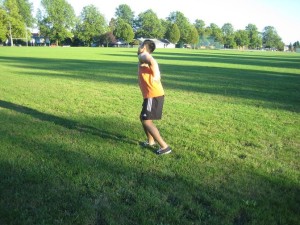Heat stroke is a serious form of heat-illness and considered as a medical emergency. If an individual is suspected with heat stroke, call for emergency assistance right away and provide proper first aid until the medical team arrives.
It is important to note that heat stroke can impair or cause damage to the brain and other internal organs. Even though it affects individuals aged 50 and over, it can also affect healthy young adults.
The condition often arises as a development from a mild heat-related condition such as heat cramps as well as heat exhaustion. Yet, it can occur even if there are no early indications of heat injury.
What are the indications?

The characteristic symptom of heat stroke is a core body temperature higher than 104 degrees F but fainting might be the initial sign. The other symptoms might include the following:
- Throbbing headache
- Lightheadedness or dizziness
- Muscle weakness or cramping
- Warm, reddened and dry skin
- Lack of sweating despite the heat
- Nausea and vomiting
- Rapid, shallow breathing
- Rapid heart rate that is either weak or strong
- Seizures
- Behavioral changes such as disorientation, confusion or staggering
- Loss of consciousness
First aid for heat stroke
Once an individual is suspected with heat stroke, call for emergency assistance or bring the individual to the nearest healthcare facility. Remember that a delay in treatment can be deadly.
While waiting for the medical team to arrive, provide first aid care.
Transfer the individual to an air-conditioned room or a shaded, cool area and remove any unnecessary clothing. If possible, take the core body temperature and cool the body down to 101 to 102 degrees F. In case a thermometer is not available, you still have to perform cooling measures.
Commonly used cooling measures
- Fan air over the individual while wetting his/her skin with water from a garden hose or sponge.
- Apply ice packs on the neck, armpits, groin and back. The reason for this is that these areas are packed with blood vessels adjacent to the skin, thus cooling them can reduce the body temperature.
- Dip the individual in a tub of cool water or assist him/her to a shower.
- If the individual is healthy and young and suffered from heat stroke while engaging in strenuous exercise, an ice bath can help cool down the body.
More Information / Disclaimer
The information posted on this page on heat stroke management is for learning purposes only. Learn to recognize and manage heat-illnesses including heat stroke by taking a standard first aid course with Mississauga First Aid.

